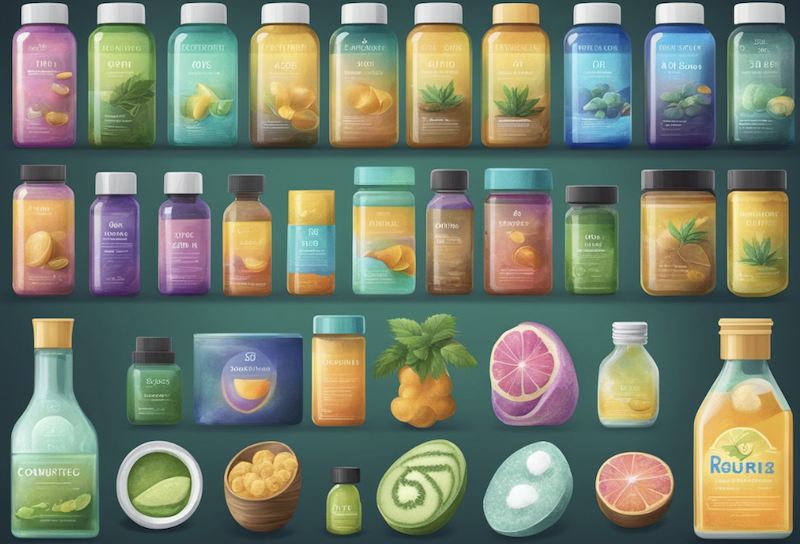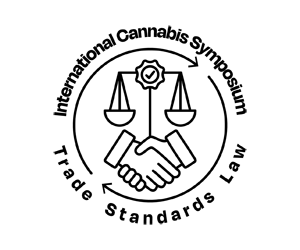The world of cannabis is constantly evolving, introducing us to new and intriguing cannabinoids that have the potential to greatly impact our lives. Two such compounds are Delta 8 and Delta 9 THC, which have captured the attention of not only cannabis enthusiasts but also researchers and medical professionals alike. In order to make an informed decision about these fascinating substances, it is essential that we understand their uses, effects, and consumer experiences.
Both Delta 8 and Delta 9 THC are psychoactive compounds derived from the cannabis plant. Delta 9 THC, the more well-known and potent cousin of Delta 8, has long been responsible for the characteristic “high” associated with cannabis use. However, Delta 8 THC has recently gained popularity for its more subtle and relaxing effects, offering a gentler psychoactive experience in comparison. These cannabinoids interact with our endocannabinoid system, specifically the CB1 receptors, leading to various physiological and psychological responses such as altered perception, mood, and appetite.
As consumer interest in these cannabinoids continues to rise, purchasing from stores such as Everyday Delta, individuals are eager to explore the potential therapeutic benefits and distinct experiences each compound offers. By understanding the key differences and similarities between Delta 8 and Delta 9 THC, one can make an educated decision regarding the most suitable option based on their unique needs and preferences. Armed with this knowledge, consumers can truly harness the power and potential of these ancient healing plants.
Overview of THC Variants
In the world of cannabis, there are over 100 known cannabinoids. Among these, Delta-8 THC and Delta-9 THC are the most widely discussed and recognized for their psychoactive effects. While these two THC variants share several similarities, they provide distinct consumer experiences, making them popular for different reasons.
Delta 8 THC: Characteristics and Source
Delta-8-tetrahydrocannabinol, or simply Delta-8 THC, is a minor cannabinoid found in the cannabis plant. Often derived from hemp, it presents a milder psychoactive experience compared to its more potent counterpart, Delta-9 THC. People who use Delta-8 THC typically report a relaxed and stress-free feeling, along with a boost of creativity.
- Legality: Delta-8 THC is federally legal in the United States if sourced from hemp containing less than 0.3% Delta-9 THC. However, some states have imposed bans on Delta-8 products.
- Effects: Delta-8 THC is known for producing a less intense high compared to Delta-9 THC, with users often experiencing more relaxation and lower incidences of anxiety or paranoia.
Delta 9 THC: Defining the Traditional High
Delta-9-tetrahydrocannabinol, often referred to simply as Delta-9 THC, is the primary psychoactive compound in the cannabis plant. Widely known for its strong effects, Delta-9 THC has been at the center of the cannabis culture and legalization debates for years.
- Legality: Delta-9 THC is legal for recreational use in several states, while others permit it only for medical purposes or maintain a strict prohibition. The federal legality of Delta-9 THC varies based on the source: legal if derived from hemp with less than 0.3% THC, but illegal if sourced from marijuana.
- Effects: Delta-9 THC is known for producing a more intense and potent high than Delta-8 THC. Consumers often report a range of effects, from euphoria and increased sensory awareness to feelings of paranoia and anxiety.
In summary, while both Delta-8 and Delta-9 THC are cannabinoids with psychoactive properties, they vary in their source, legality, and the intensity of the high they induce. As the world embraces cannabis, understanding these differences is key to making informed decisions about consumption and enjoyment.
User Experiences and Effects
Recreational Perspectives
Many consumers have reported enjoying the relaxing properties of both Delta 8 and Delta 9 THC. They often use these cannabinoids for their ability to alleviate stress and anxiety. In a recreational setting, users may experience a sense of euphoria and find it easier to socialize. Delta 8 THC typically provides a milder high compared to Delta 9 THC, which some users prefer for a more manageable experience.
When discussing their initial reactions, it is not uncommon for consumers to describe:
- Relaxation: A sense of calmness that helps relieve stress
- Euphoria: A feeling of happiness and contentment
- Reduced anxiety: A sense of ease in social situations or when dealing with everyday problems
Unexpected Reactions and Managing Risks
Despite the generally positive experiences reported by users, both Delta 8 and Delta 9 THC may also produce undesirable side effects. These can vary between individuals and depend on the dosage, method of consumption, and individual factors such as sensitivity and tolerance levels.
Some of the more common side effects experienced by users include:
- Vomiting
- Dry mouth
- Hallucinations
- Memory loss
- Loss of consciousness
It is essential for consumers to be aware of these potential side effects, ensuring they are well-informed about how to manage risks and safely consume these products. For instance, by starting with a lower dose and gradually increasing as needed, users can more effectively gauge their personal tolerance and prevent the severity of adverse reactions. To minimize accidental overconsumption, many consumers opt for products with clear labeling and recommended dosages.
Understanding the unique effects and potential risks associated with Delta 8 and Delta 9 THC allows consumers to make informed decisions and enjoy their use responsibly.
Legal Status and Regulatory Perspectives
Understanding Hemp Legislation
In recent years, the legal status of cannabinoids, such as Delta 8 THC and Delta 9 THC, has become a topic of interest and debate. Hemp legislation plays a crucial role in shaping the regulatory environment surrounding these compounds. The 2018 Farm Bill, for instance, significantly impacted the legality of hemp-derived products. This bill removed hemp from the list of controlled substances, effectively reclassifying it from a Schedule I drug to an agricultural commodity. Consequently, hemp-derived cannabinoids, including Delta 8 and Delta 9 THC, witnessed regulatory shifts.
The Farm Bill stipulates strict conditions to ensure compliance:
- The hemp plant’s THC concentration should not exceed 0.3% on a dry weight basis.
- Each state government and tribal territory must develop a regulatory plan to be approved by the United States Department of Agriculture (USDA).
- A hemp-derived product still requires FDA approval before being marketed for therapeutic or medical purposes.
Navigating State and Federal Laws
Federal level regulations, such as those set by the FDA, play a significant role in the legality of Delta 8 and Delta 9 THC. The FDA emphasizes the importance of public health, cautioning against the use and marketing of cannabis-derived products with unproven therapeutic benefits. This stance presents a challenge for the cannabis industry, as it requires rigorous research and approval processes for new products.
The state government takes a more varied approach, with laws and policies surrounding Delta 8 and Delta 9 THC varying widely across the United States. Some states have legalized and regulated medicinal and recreational marijuana products, while others maintain a stricter stance.
| State | Legal Status |
| Colorado | Medicinal and recreational use of Delta 9 THC legalized; Delta 8 THC regulated |
| Kansas | Delta 8 THC legalized; Delta 9 THC remains illegal |
| Texas | Delta 9 THC illegal except for limited medical use; Delta 8 THC remains in limbo |
As a result, the legal landscape remains complex and evolving, making it essential for consumers, businesses, and policy advocates to closely monitor developments in this area. By understanding the nuances of federal and state laws, individuals can make informed decisions about the use of Delta 8 and Delta 9 THC products while ensuring compliance with legal requirements.
Product Types and Consumption Methods
From Edibles to Inhalants
Cannabis enthusiasts have a variety of product options and consumption methods when it comes to Delta 8 THC and Delta 9 THC. Edibles are a popular choice as they come in various forms such as gummies, brownies, and chocolate. They provide a discrete and delicious way to experience the potential benefits of these cannabinoids. However, the onset of effects from edibles can be slow, typically taking 30 minutes to 2 hours to be felt.
For those seeking a quicker effect, inhalants like vaping and smoking offer a more rapid delivery method. Tinctures are another option, with drops typically placed under the tongue. While tinctures tend to be faster acting than edibles, they are slower than inhalants.
Here is a summary of some popular Delta 8 and Delta 9 THC product types and their consumption methods:
| Product Type | Consumption Method | Onset of Effects |
| Edibles | Ingestion | 30m – 2h |
| Inhalants | Vaping, Smoking | Minutes |
| Tinctures | Sublingual | 15m – 45m |
Ensuring Safe Use and Dosage
When experimenting with Delta 8 or Delta 9 THC products, consumers should always prioritize safe use and proper dosage. Since the effects of these cannabinoids can vary in intensity, novice users are advised to start low and go slow. Gradually adjusting the dosage allows each individual to find their personal comfort level without experiencing unwanted side effects.
A crucial step in ensuring safety is researching the product’s origin, manufacturer, and lab test results. Transparency from reputable companies provides consumers with confidence in their chosen product’s accuracy and quality.
Additionally, users should be aware of the potential interactions with prescription or over-the-counter medications or consider consulting with a healthcare professional before using these cannabis products. Researching local laws and regulations regarding the possession and consumption of Delta 8 or Delta 9 THC is also essential, as the legal status of these cannabinoids varies regionally.
Scientific Research and Empirical Evidence
Current Findings on THC Effects
As cannabis research continues to flourish, our understanding of the effects and uses of its various compounds, such as delta-8 and delta-9 THC, expands. Delta-8-THC, regarded as delta-9-THC’s “nicer younger sibling” (source), has recently gained significant attention. Some key findings from recent studies on delta-8 and delta-9 THC are as follows:
- One study discovered that delta-8-THC became widely available in the US in late 2020 and quickly generated substantial revenue for hemp processing companies.
- Delta-8-THC users tend to describe their experiences as gentler and more manageable than those involving delta-9-THC (source). This has led many to believe that delta-8 has different mental health effects.
- Delta-8-THC is often marketed in ways that appeal to a younger audience and can be found online at lower prices than delta-9-THC, as revealed by a scoping review.
Gaps in Knowledge and Future Studies
Despite the growing interest in delta-8 and delta-9 THC compounds, there are still gaps in our knowledge regarding their uses, effects, and related experiences. Some areas requiring further investigation include:
- The mental health effects of delta-8 and delta-9 THC compounds, as research on this topic remains scarce.
- The inconsistency in the synthesis and regulation of delta-8 THC products, which may lead to contamination and unreliable effects (source).
- The need for more comparative studies between delta-8 and delta-9 THC to understand their distinct effects on human psychology and physiology.
In order to fill these gaps, academic researchers must conduct further empirical studies, utilizing both qualitative and quantitative methodologies. This would expand the evidence available on delta-8 and delta-9 THC compounds and ensure that consumers have a more comprehensive understanding of these cannabinoids and their potential benefits or risks.
Consumer Safety and Harm Reduction
Identifying High-Quality Products
In recent years, the popularity of cannabis products, including Delta-8 and Delta-9 THC, has risen dramatically. Consequently, consumers must prioritize ensuring the safety and effectiveness of the products they choose. Opting for high-quality products can reduce the risks associated with contaminants, synthetic cannabinoids, and other potential health hazards.
To find reliable and safe products, consumers should seek brands that offer third-party lab testing results. These test results ensure the product’s potency, verify the cannabinoid content, and detect any contaminants or harmful substances. Additionally, it’s essential to select products from reputable manufacturers with transparent ingredient lists and clear labeling.
Battling Misinformation and Unsafe Practices
Misinformation and a lack of regulation in the cannabis industry have led to several concerns surrounding consumer safety. Battling such issues requires informed decision-making and harm reduction strategies on the part of the consumer.
- Adverse effects: Consumers should be aware that Delta-8 THC, similar to Delta-9 THC, can have psychoactive effects. Side-effects like dizziness, anxiety, confusion, and even hallucinations may occur. They must follow the product’s recommended dosage and listen to their bodies in order to avoid such adverse experiences.
- Risks related to pharmaceutical drugs: Before using cannabis products, those taking prescribed medications should consult their medical professional to prevent adverse drug interactions. Interactions between certain medications and THC can cause complications or reduce the efficacy of the drugs.
- Harm reduction: As part of practicing safety, consumers should never operate a vehicle or heavy machinery under the influence of cannabis products. In addition, understanding local laws and legal restrictions surrounding THC usage is essential in avoiding unnecessary legal issues.
By following these guidelines and staying informed, consumers can safely enjoy the benefits of Delta-8 and Delta-9 THC while reducing the potential risks and harm.
Social and Cultural Impact
Public Opinion and Industry Growth
In recent years, the cannabis industry has experienced significant growth, driven in part by evolving public opinions on marijuana consumption and the increasing prevalence of information on the effects and uses of Delta 8 and Delta 9 THC. As more people become aware of the potential benefits and recreational uses of these cannabinoids, they’re inspired to explore products containing Delta 8 or Delta 9 THC, such as edibles and vape cartridges.
This industry growth can also be attributed to social media’s role in spreading awareness and shaping public opinion. Platforms like Instagram, Twitter, and Facebook provide easy access to information and allow users to share their experiences using cannabis products. Additionally, online surveys conducted in the United States have shown an increasing acceptance of marijuana for recreational and medicinal purposes. Online stores like Everyday Delta offer a secure place to purchase Delta 8 or Delta 9 products.
Cannabis in the Digital Age
With the rise of the internet and social media, information about cannabis and its effects has become widely available to the public. In particular, forums, blogs, and online communities centered around cannabis culture provide in-depth knowledge and personal experiences on Delta 8 and Delta 9 THC usage.
Some popular online resources include:
- Subreddits like r/Cannabis and r/Delta8
- YouTube channels featuring educational content and user experiences
- Podcasts focused on cannabis culture and industry news
- Everyday Delta which is an online Delta 8, Delta 9 ecommerce store.
In addition to these resources, cannabis companies often use social media platforms to engage with their audience and promote their products. By utilizing digital marketing strategies and creating visually appealing content, they’re able to attract more consumers and encourage further exploration into the world of Delta 8 and Delta 9 THC.
As the cannabis industry continues to grow and evolve, it is important to remember that the social and cultural impact of cannabinoids like Delta 8 and Delta 9 THC are inexorably linked with the digital age and the ever-changing landscape of public opinion. By staying informed and mindful of individual experiences, we can better understand the true effects and uses of these compounds.























